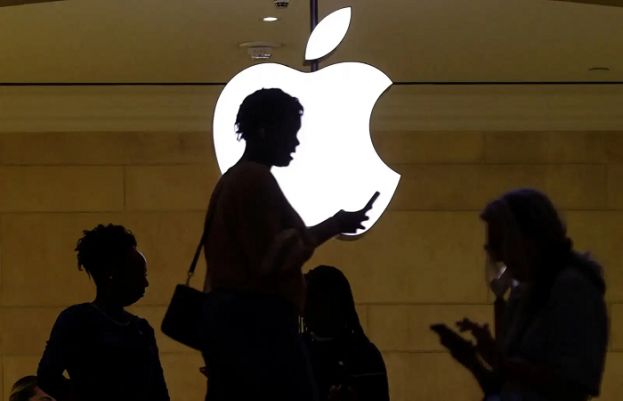Apple reported a strong quarterly profit of $23.4 billion on Thursday, beating market expectations despite ongoing concerns over U.S. tariffs impacting its supply chain. The tech giant posted $94 billion in revenue for the June quarter—typically a slower period—driven by double-digit growth in iPhone, Mac, and Services across all global markets. CEO Tim Cook highlighted the record-breaking performance, noting growth in every geographic segment. iPhone sales alone brought in $44.6 billion, up from $39.3 billion during the same quarter last year. Apple’s stock rose over two percent in after-hours trading. Global shipments of smartphones fell marginally to 288.9 million units in the recently-ended quarter, according to market-tracker Canalys. Samsung was the largest vendor, shipping 57.5 million smartphones, while Apple finished second with iPhone shipments down two percent at 44.8 million units, Canalys reported. “Apple’s performance showed strong resilience amid fierce competition in China and an inventory correction in the US as it adjusted to the rapidly changing tariffs,” the market tracker said in its findings. Cook said that the Trump tariffs cost Apple $800 million in the quarter that just ended and are expected to cost the iPhone maker $1.1 billion in the current quarter. “Assuming the current global tariff rates, policies, and applications do not change for the balance of the quarter, and no new tariffs are added, we estimate the impact to add about $1.1 billion to our costs,” Cook said. Tariffs are essentially a tax paid by those importing goods to the United States. This means Apple is on the hook for tariffs on iPhones and other products or components it brings into the country from abroad. Cook said that most iPhones sold in the United States now come from India as Apple works to navigate US President Donald Trump’s trade war with China. Trump has taken aim at India with a 25 percent duty to begin Friday — slightly lower than previously threatened — after talks between Washington and New Delhi failed to bring about a trade pact. Apple’s tariff cost is up because sales are up, according to Cook. “In terms of what we do to mitigate, we obviously try to optimize our our supply chain,” Cook said of managing the tariff hit. “Ultimately, we will do more in the United States; we’ve committed $500 billion investment in the US over the next four years.” Tit-for-tat exchanges have seen hefty US levies imposed on China, with Beijing setting retaliatory barriers on US imports. Sales of iPhones in mainland China were $15.4 billion in the quarter, compared with $14.7 billion in the same period a year ago, according to Apple. Revenue in Apple’s services business selling digital content and subscriptions to fans of its devices grew to $27.4 billion in the quarter, Apple reported. “The results show that Apple’s iPhone strategy is working to offset the impact of looming challenges with AI development timelines, tariff pressures, and Google’s antitrust issues,” said Emarketer analyst Jacob Bourne. “The company’s successful pivot to iPhone manufacturing in India, demonstrates supply chain flexibility, while its return to iPhone growth in China and continued services segment expansion, including deeper financial services offerings, show diversification beyond hardware.”
Apple exceeds profit expectations on robust iPhone sales

